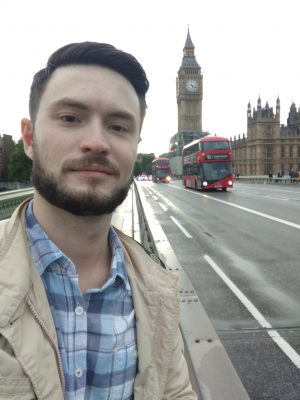Join a powerful, unprecedented alliance for better eye health for all.
Join IAPB-
Choose an alternate language here
Dr Makarov Vsevolod Sergeevich, an anesthesiologist working in Neonatal Intensive care Unit, writes about the lessons he learnt from attending the third congress on the transport of high-risk neonates.
I am an anesthesiologist working in the delivery room and the NICU at the Sverdlovsk Regional Children’s Hospital in Yekaterinburg, Russia. One of my roles is to arrange the transport of infants to the Level 3 Neonatal Intensive Care Unit (NICU) from within Yekaterinburg and from the provinces around. Once in the Level 3 NICU we can arrange for these infants to be screened for Retinopathy Of Prematurity (ROP) and treated where necessary. To prevent ROP screening and treatment needs to be done as soon as the infant has been identified as being at risk and is stabilised.
The challenges we face in Russia are several. The first being time; infants are not transported quickly enough from the regional hospital to our unit. This relates to the large distances between the regional hospitals and our tertiary NICU.
Our practices which were functional in the past need to be ready for modern challenges and reflect updated guidelines. We need to look at ways to improve our time management, communication and decision-making between the regional hospitals and the level 3 NICU so that the babies are transported and screened in good time.
Part of the delay is due to the low professional skills and experience of doctors in the region that leads to more time spent on stabilisation of infants before they can be transported for screening and treatment. Unfortunately we have only one crew a day who work on large distances, and we don’t use helicopters routinely.
I attended the second congress on the transport of high-risk neonates in Copenhagen in 2016, with support from IAPB and Eye Samaritans International. I was also sponsored to attend the 3rd edition of the congress again this year in Oxford, U.K.
After attending the congress last year I presented some solutions to my colleagues and managers on my return. Consequently, we have managed to make some changes on how we organise the transport of infants and decision-making to facilitate this.
This year’s congress was incredibly helpful and relevant; with the main topic being ‘Time’, which was very interesting for me. An array of speakers looked at ways to improve the time between the initial call to the Level 3 NICU from the hospital and when the infant is referred to the Unit. A distinct difference between the Russian situation and that of my colleagues presenting at the congress was that they had a separate transport team who work independently from the hospital and are able to collect information and decide which infant is a priority. In Russian hospitals we have a very small staff and limited vehicles.
What has been inspiring for me while attending the congress has been the opportunity to listen to and meet leaders from across the globe, to make contacts to support my work and to hear about new ideas and the latest research. It is a privilege to attend, especially as both years I have been the only person representing Russia.

I want to take this opportunity to thank Eye Samaritans International for their support and to IAPB for arranging this.
Photo credit: Hanh Pham, Orbis International for #MakeVisionCount